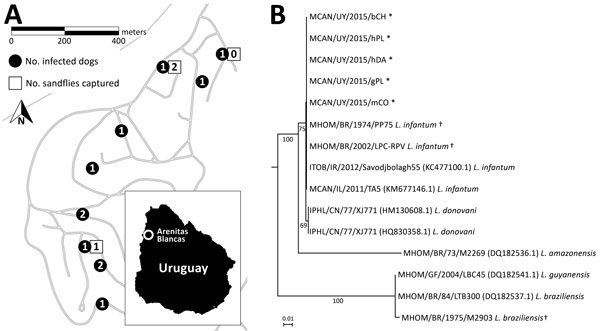Volume 23, Number 3—March 2017
Research Letter
Autochthonous Outbreak and Expansion of Canine Visceral Leishmaniasis, Uruguay
Figure

Figure. Survey of Leishmania spp. infection in dogs in Arenitas Blancas, Salto, Uruguay. A) Surveyed area in the locality of Arenitas Blancas in Salto, Uruguay. White squares represent the location of Lutzomia longipalpis sand fly captures, and black circles represent domiciles in which infected dogs were found; numbers indicate number of Leishmania spp.–infected sand flies or dogs at that location. B) Neighbor-joining phylogenetic tree obtained from the analysis of Leishmania internal transcribed spacer 1 sequences from tissue samples of infected dogs. Bootstrap values are represented at the nodes of major branches. Scale bar indicates nucleotide substitutions per site. *Sequences obtained from infected dog samples. †Reference strains sequenced by the authors.
1These authors contributed equally to this article.